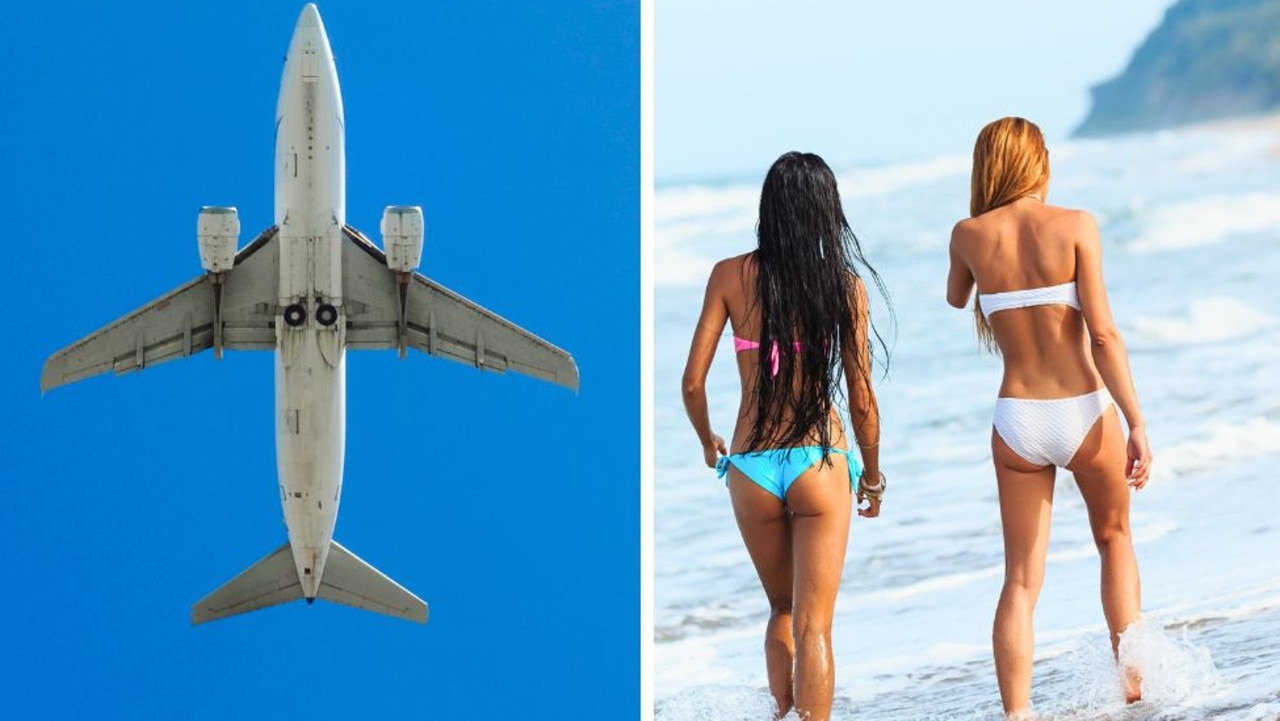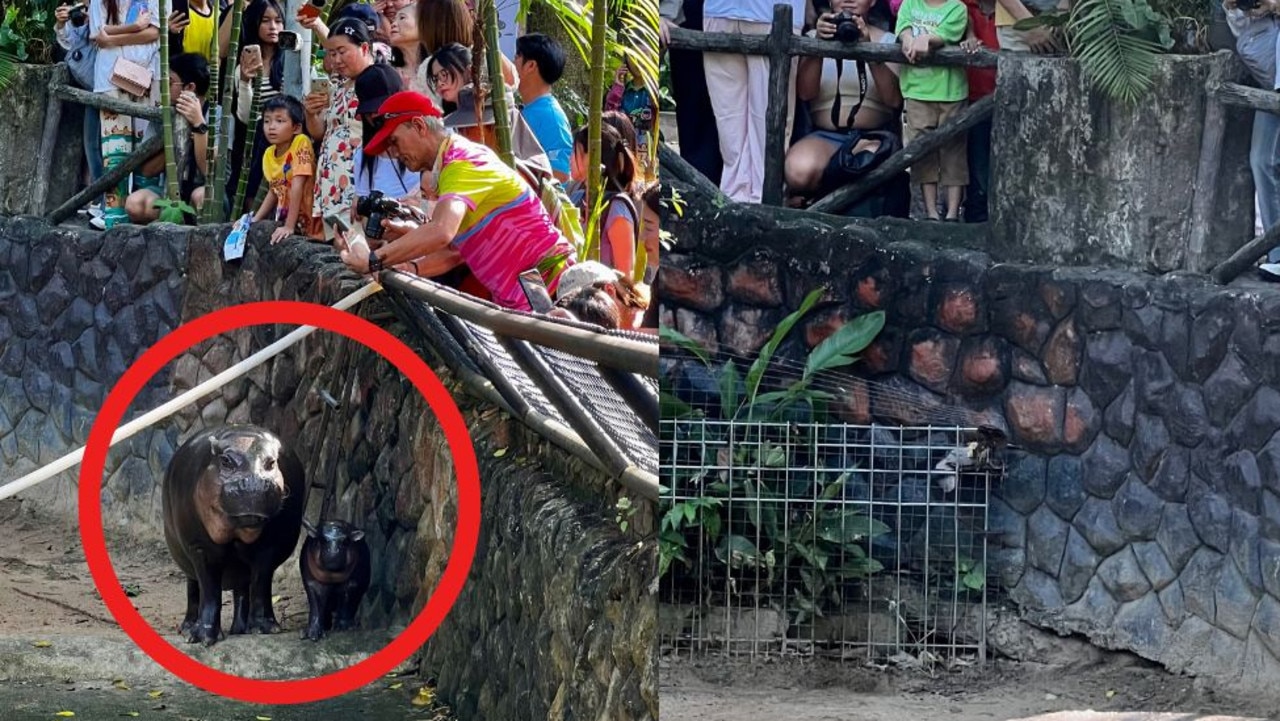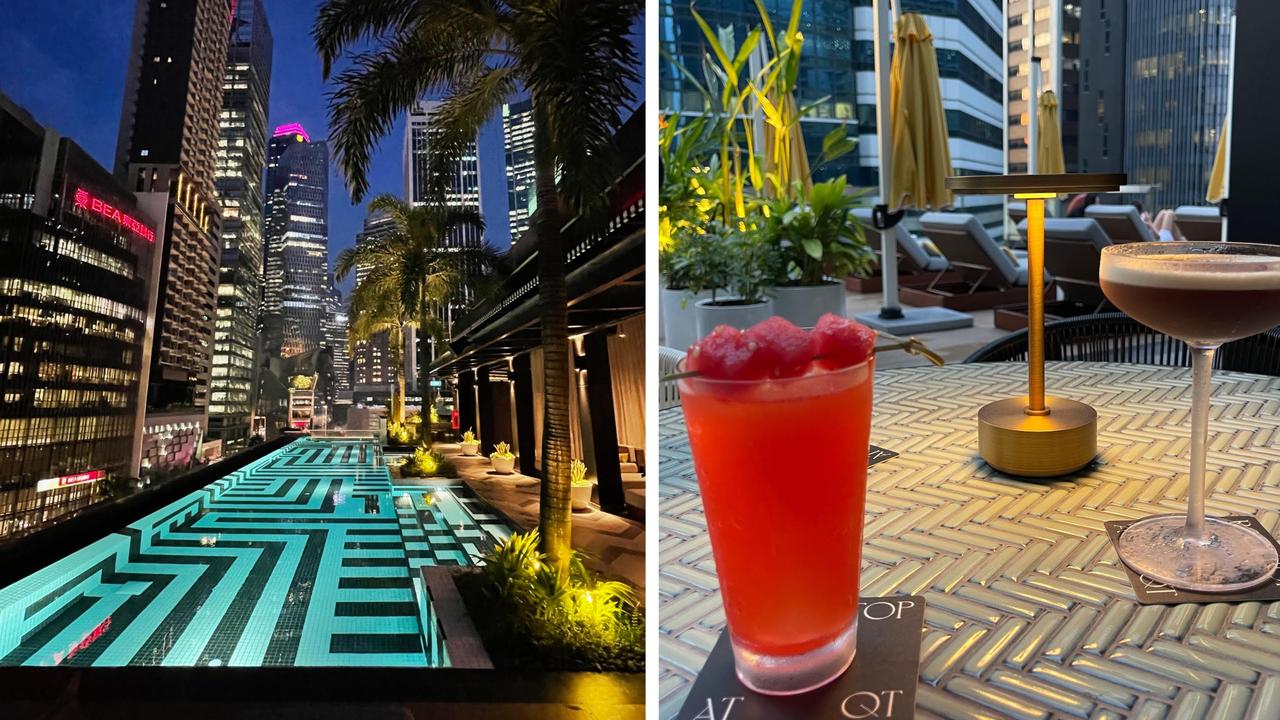‘Where is everyone?’ Why tourists have vanished from Indonesian island
There’s something unusual about this Indonesian island — it’s the complete absence of tourists, more specifically the lack of Aussies.
By all accounts, I’m at a fairly stock-standard Indonesian beach bar, but there’s something unusual about the scene around me.
Coloured bean bags are scattered on the sand, Bintangs are free-flowing, and a cover band is playing all the classics, from Frankie Valli to Bruce Springsteen.
It’s a perfect summer’s evening and I’m in good company, recharging the batteries and celebrating what’s to come in 2024.
But it’s the complete absence of tourists, more specifically the lack of Aussies, that’s caught my attention.
Not that I’m complaining, but where is everyone?

It’s a scene repeated extensively across Gili Air, one of three Indonesian islands known as Tigi Gili. This includes Gili Meno, and its neighbouring party island, Gili Trawangan (aka Gili T).
Unlike the well-trodden destinations of Canggu or Kuta, where you might spy a former MAFS star by the pool, or Jackie O and Carrie Bickmore letting their hair down, Gili Air literally feels empty, and it’s actually kind of weird.
I’m unwinding at a time when many Aussies are also away on their summer breaks, so it’s surprising to feel like I have the whole place to myself, but even more so is the reason why.
While the lack of tourism is partly due to the aftermath of the pandemic, I’m told by local bar owners that the peak season for the Gili Air is actually the northern hemisphere summer, where many Europeans head to Asia in droves.
Come June and July, this place will be pumping, making a couple of nights here right now all the more appealing.
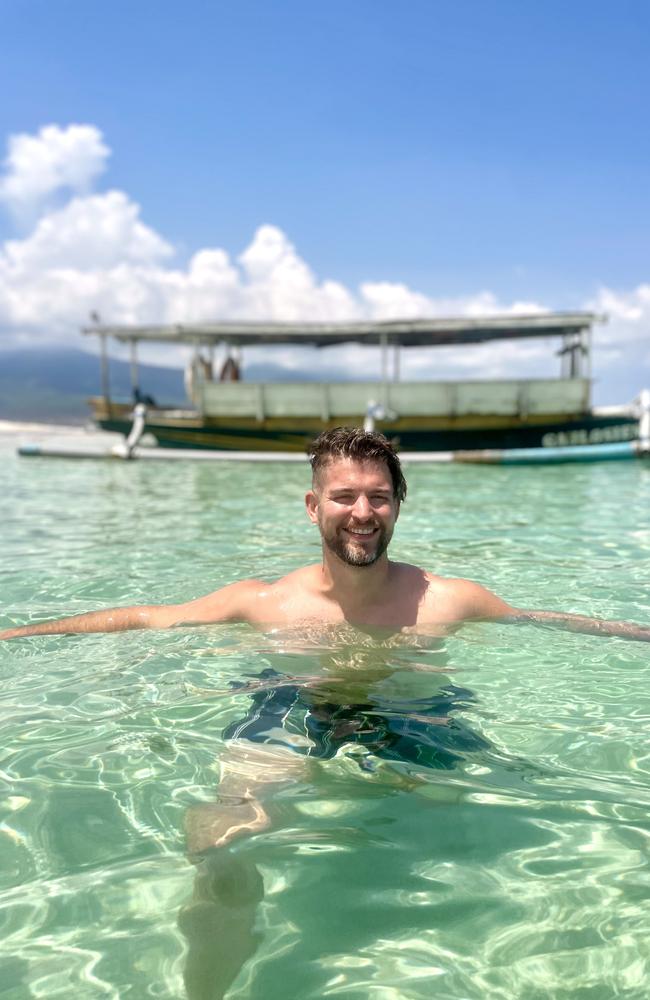
Spanning just 5km, the whole of Gili Air is very walkable in an hour or so, and is surrounded by white beaches and warm water.
There’s no cars or motorbikes, so if you don’t fancy walking, you’re either grabbing a bicycle or a horse-drawn cart known as a cidomo.
And far as island destinations go, everything is at your fingertips minus the queues and ruckus, from local restaurants, coffee roasters, traditional spas and massage, through to yoga and meditation classes.
With holiday activities including snorkelling, scuba diving and cooking classes, for those wanting some peace and quiet, it’s really a no-brainer.
I decided to do things differently this summer, skipping family Christmas to instead travel solo across Indonesia.
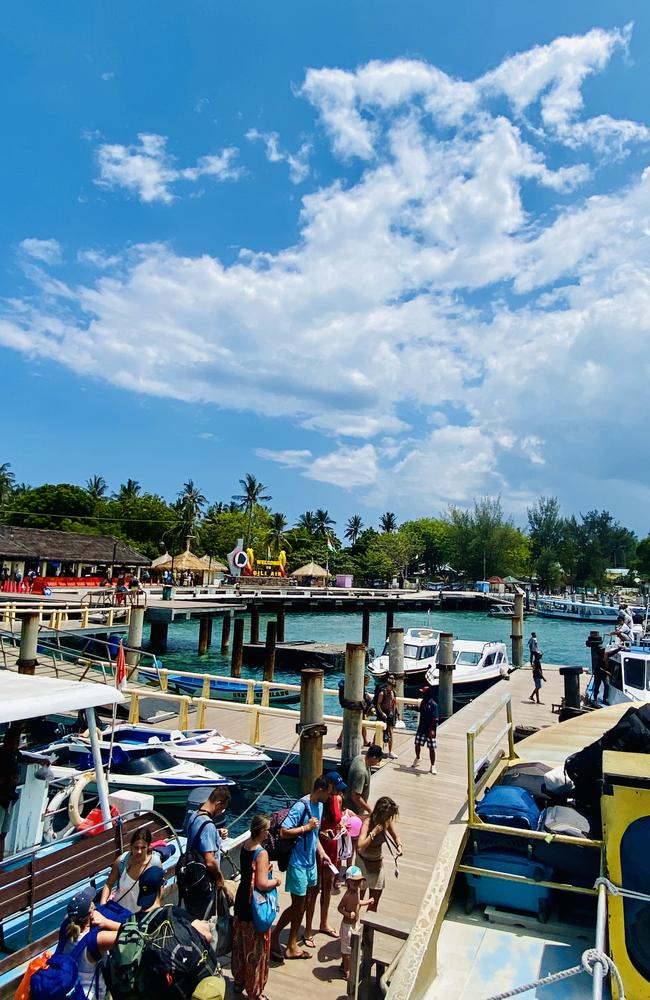
Taking part in Intrepid’s ‘Discover Lombok’ group tour gave me ample social time anyway.
Aboard our minibus was a mix of ages, nationalities and backgrounds, making for an interesting eight days away with my 10 “chosen” family members.
Not only was this tour affordable (starting at $1207, this breaks down to around $150 a day for accommodation, transfers plus most meals and activities), one of the big selling points of a small group tour is that everything is taken care of.

My stay at a beachside villa on the Gili islands wrapped up the final leg of my adventure abroad, with the earlier days of the trip on neighbouring Lombok showing off a whole other side to Indonesia.
Our guide Yayan described Lombok as the “skinny and sexy” sister island of Bali, because like Gili Air, it’s quieter, laid-back and also has fewer people compared to other parts of Indonesia.
While roughly the same size as Bali, its total population of 445,933 residents pales in comparison to Bali’s mammoth 4.4 million people calling it home.
Located in West Nusa Tenggara and separated into five regions, Lombok is what Bali must have looked like before its tourism boom.
This will all change at some point – Indonesia’s government is banking on the popularity of the island’s yearly MotoGP to drive investment across Lombok’s property market, tourism and infrastructure.

Getting to Lombok is straightforward; once you clear Denpasar airport, catch one of the many ferries at Padang Bai, tickets start at around 230,000 IDR ($23), and the journey to Lombok’s Bangsai Port is about two hours.
You can also fly in via Lombok International Airport, but there was something special about soaking up the sunshine on the rooftop of the ‘Golden Queen’ ferry as the crew blasted 90s pop bangers including the Vengaboys.
Docking at the port, the scenes resembled some of the chaos you see at Denpasar.
As soon as we disembarked, dozens of taxi drivers were in our face, crew members from the ferry were stacking up our luggage, not to mention the scores of passengers coming and going, most of who were locals.

Typically more popular with expat surfing communities, Lombok is an excellent choice for those wanting a more authentic and understated experience of Indonesian culture.
This included connecting with communities in local villages and out in the rice paddies, and learning about centuries-old agriculture techniques still used by the farmers at work.
We drank coffee at a plantation in Telabatu that was infused with vanilla beans, and watched the skilful precision of weavers at Pringgasela, making everything by hand.
In Masbagik Village, our introduction to local children and teenagers saw them practice their English for the very first time, something that was very special to be a part of.
Unsurprisingly, it was sport and popular culture that ultimately underscored these discussions, the likes of football stars including Cristiano Ronaldo and David Beckham helping us build rapport which led to high fives and group photos on our departure.
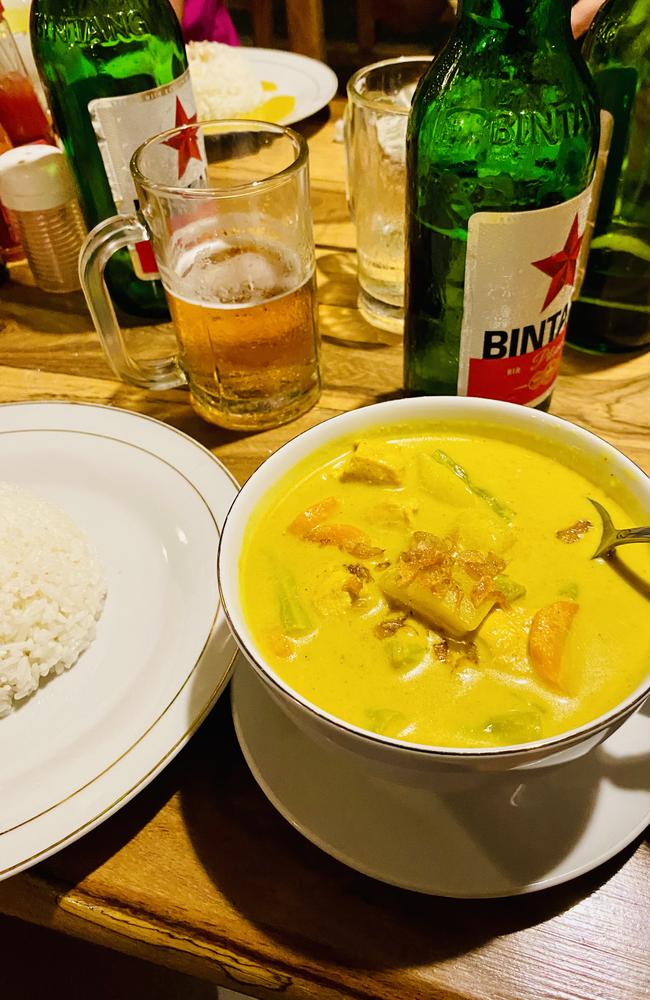
Meantime, a stopover at Senaru saw our group visit Kampung Tradisional, the oldest traditional village on Lombok, founded by the Sasak tribe around a 1000 years ago.
Some of its structures including the central stone shrine have been sitting untouched for a millennia.
Showing us around were female guides from a local charity, established to empower local women in the community to build work experience outside the more traditional gendered job roles seen across Indonesia.
Seeing a snapshot of how the day-to-day would have played out hundreds of years ago was fascinating and insightful, and I would have missed all of these opportunities if I chose a more conventional holiday.

Alongside these cultural experiences, Lombok’s natural wonders were just as impressive.
The towering peaks of Mount Rinjani, an active volcano rising 3726 metres above sea level, was a centrepiece, looming in the distance behind cloud cover at many of our stops.
You can hike to the summit if you have a spare half day, or take a swim in the lake at the top, while beaches dotted around Lombok’s perimeter are full of spectacular marine life including sea turtles, and endless species of tropical fish.
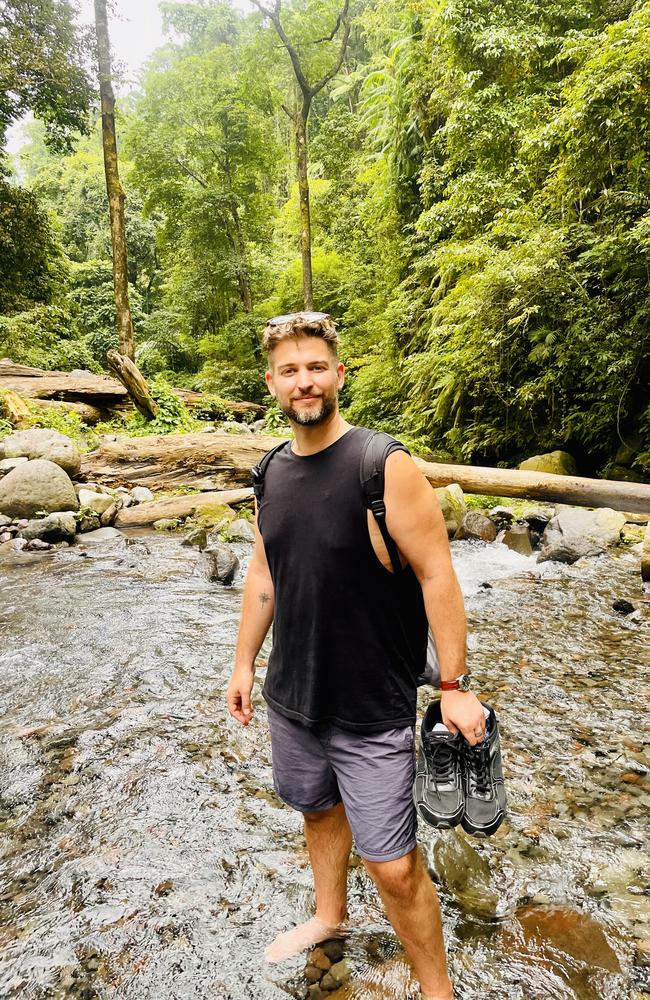
Snorkelling off the deserted Gili Pasaran, we explored one of the many tiny islands you’ll find within a short boat ride from Labuhan Pandan Village in Lombok’s east.
The extensive impact of coral bleaching did not overshadow the diversity of marine life calling these waters home.
Here one of the most bizarre moments of my trip unfolded, when I made eye contact with some of the tropical fish.
Through my goggles we definitely had a moment together and I’ve never felt so seen.
A morning out on the water will set you back around 310,000 IDR ($30) and afterwards there was ample time to enjoy fresh coconuts at an island bar.
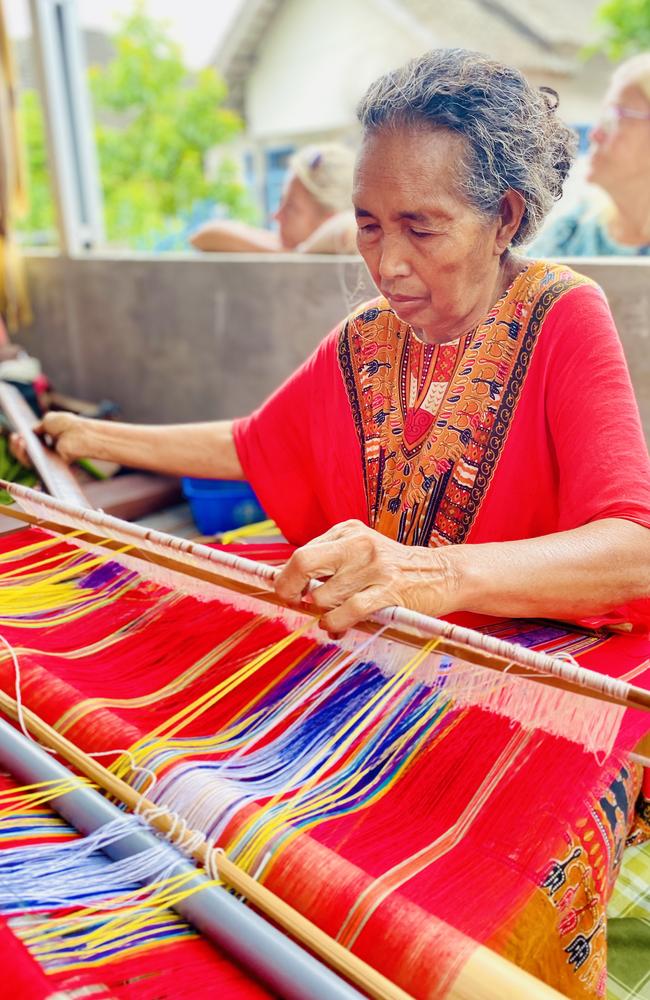
One of the most spectacular moments was visiting the Benang Stokel and Benang Kelambu waterfalls.
Located in the central part of the island, at the base of Mount Rinjani, these are surrounded by lush rainforest and local wildlife including cheeky monkeys swinging from vine to vine.
The hour-long round trek was like something out of an Indiana Jones movie, as we hiked the edges of a Dutch-built aqueduct, which is still in use.
Constructed in the 19th century, the irrigation system was created to modernise farming in the neighbouring valleys, but it felt like we were in ruins of some long-lost temple, as we crisscrossed over logs, rocks and through the rushing stream to the base of the falls.
Originally the site of a major popular jumping spot, the 2018 Lombok earthquake dashed any hopes of my own adrenaline fix, with rocks now filling up the lagoon.
For now it would just have to be a quick dip and selfie under the running water.
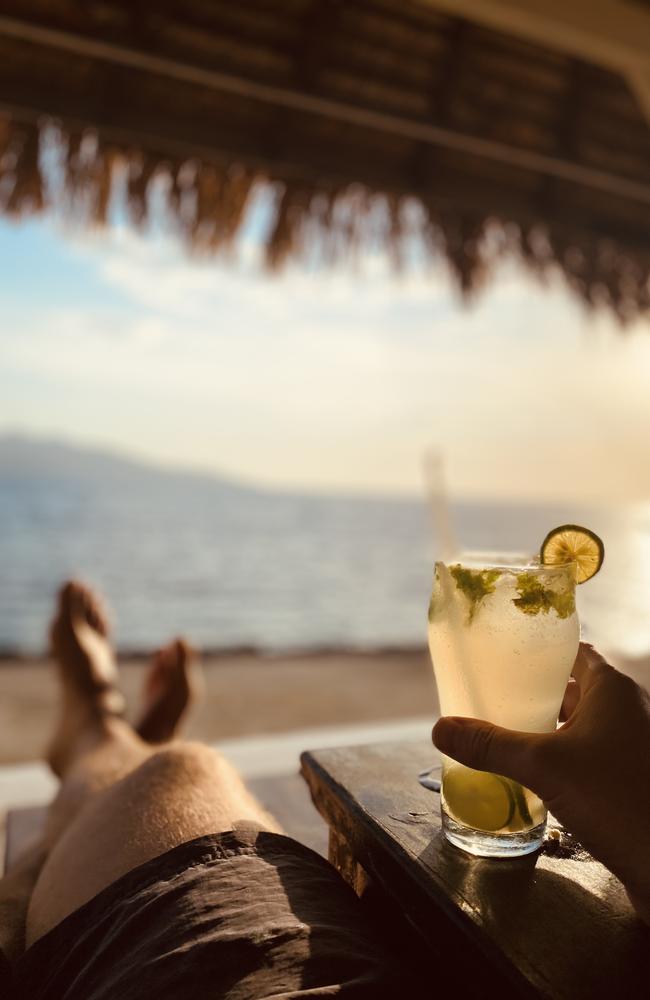
Another major highlight of my time in Lombok was the food, you could literally dedicate a week to just having a food safari that won’t break the bank.
Most dishes I tried were more traditional. As a pretty reliable staple Nasi Goreng (Indonesian fried rice) will set you back around 20,000 IDR ($2), and most places will also have Mie Goreng (fried egg noodles).
Curries (75,000 IDR or $7.50) typically come with meat, seafood or tofu, and Ikan Kabar is traditional barbecued fish, served in banana leaves.
You’ll also see a lot of Pisang Goreng – this is a delicious fried banana dessert, which goes very well with a Lombok coffee on the side.
If you’re looking for more typical western dishes, you’ll also definitely find these on the Gili Islands, where we ended our trip.
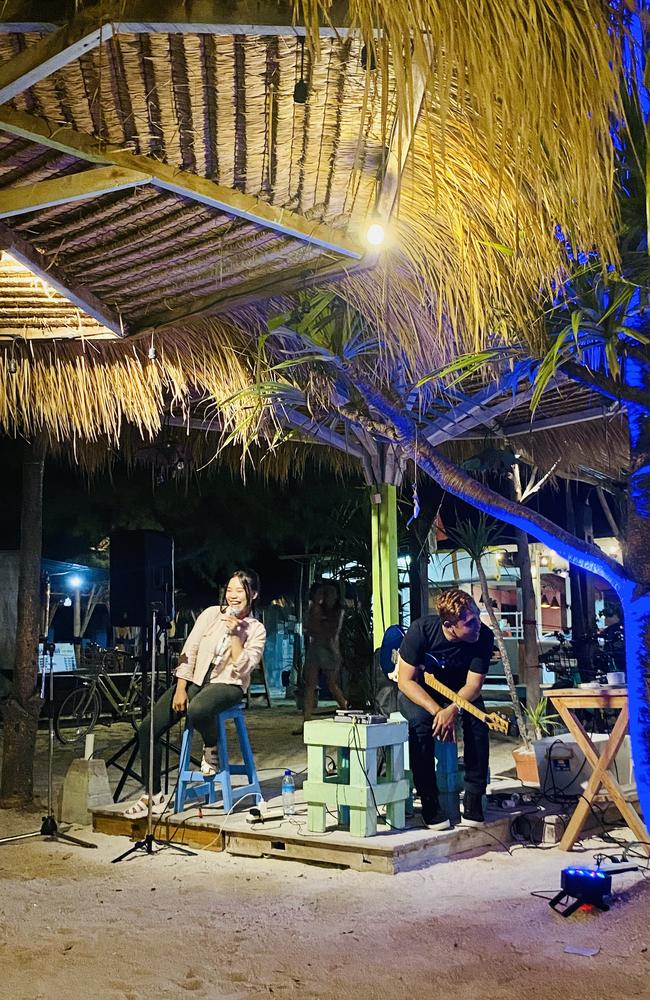
I would recommend checking out the Gili Lumbung Beach Club, which is one of the most popular restaurants on the island.
Here I tucked into some very tasty chicken satay skewers, stir-fried noodles, crackers and rice, which alongside a few beers set me back just 250,000 IDR ($25) inclusive of a tip – all very reasonable.
Most of the beach bars will also do daily happy hour specials, which includes two-for-one cocktails.
This is where I found myself on the final evening of the tour, with a fresh mojito in hand.
As the music of the band filled the air, and the mountains of Lombok loomed far away in the distance, I didn’t really want to be anywhere else.

Airlines match demand
If you’re seriously considering Indonesia as your next travel destination, the good news is Aussie budget airlines are meeting the demand.
Jetstar increased capacity to Bali by 8 per cent in 2023, compared to pre Covid, flying more than 1.7 million people between Australia and Bali, with Melbourne to Denpasar remaining Jetstar’s most popular route.
And once you’re on the ground, you have some 17,000 islands at your fingertips to explore, including Lombok.
“Bali remains the most popular international destination in our network, with more Aussies travelling to the island paradise than ever before,” a Jetstar spokesperson told news.com.au.
“Jetstar operates up to 26 flights per day to and from Denpasar (Bali), providing a great gateway for travellers to explore all that Indonesia has to offer, including destinations like Lombok and its neighbouring Gili Islands.”
Jetstar runs regular sales on flights to Bali, but always has low fares available.
There are one-way deals currently available to Bali (Denpasar) departing Melbourne from $244 and departing Perth from $203, for travel between mid-January and late February 2024.
Troy Nankervis is a freelance journalist, and was a guest of Intrepid’s ‘Discover Lombok’ tour. You can follow his travels on Instagram.



